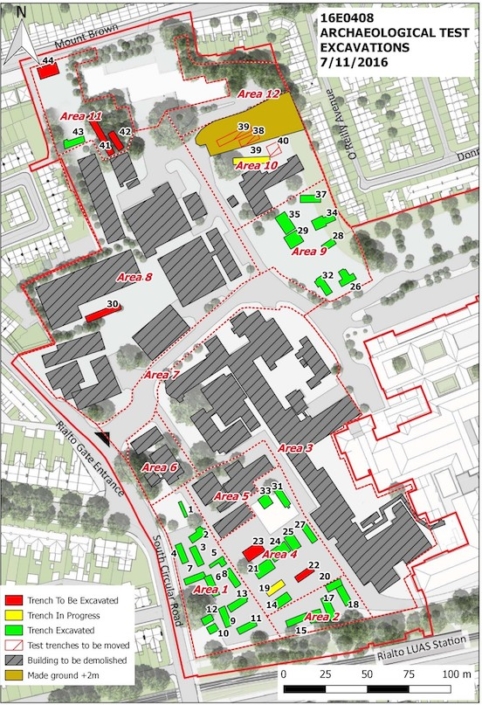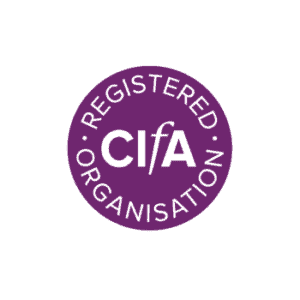Role: Project Archaeologist
The New Children’s Hospital, Dublin
Client: National Paediatric Hospital Development Board
This project is within the grounds of the existing St James’s Hospital in Dublin. The hospital under development is of national strategic importance and aims to deliver a world-class facility to care for sick children and young people from all over Ireland.
With a total construction value of c.€1.6 billion, this is one of the largest urban developments to take place in Dublin in recent years, measuring 4.86ha in total with the entire site subject to disturbance and/or excavation.
Project Scope
AMS was appointed by the National Paediatric Hospital Development Board to act as Project Archaeologist for the enabling works contract. As the Project Archaeologists, we were responsible for overseeing the archaeological aspects of the preliminary site works. This includes test excavations for 44 test trenches.
We prepared licence applications and excavation methodologies for test excavations, full archaeological excavations and archaeological monitoring. This licence was subsequently transferred to the archaeological contractor hired by the Works Contractor.
Consideration Factors
To successfully complete the archaeological investigations, it was essential to review the urban environment, the site’s anticipated archaeological significance and multiple work fronts involving bulk earthworks, clearance and excavation, on a live construction site within a live hospital campus environment.
To achieve this, we worked closely with all relevant stakeholders including the Contracting Authority, Employer’s Representative and Works Contractor in developing mitigation strategies for all archaeological investigations and monitoring, and liaised closely with the relevant statutory authorities including the National Monuments Service and Dublin City Council to obtain their support for the approaches taken.
We also carried out additional research into the history of the site to assist with the planning and interpretation of the archaeological testing, and to determine if any subsequent testing or excavations would be required.
Project Outcomes
We discovered the site was occupied, from the mid-nineteenth century, by the auxiliary workhouse of the South Dublin Union (a battlefield during the Easter Rising of 1916). Prior to this, it was predominantly undeveloped agricultural fields.
The Dublin Foundling Hospital and Poorhouse, and later the main SDU Workhouse, were located on the wider St James’s Hospital Campus, east of where the new hospital is being built.
Using new information, we were able to match building remains with historical records and assign functions, lifecycles and important historical milestones to the archaeological remains. The information was also used to ensure that the archaeological testing strategy delivered value for money by remaining focused and targeted.
Through discussions with the City Archaeologist, Dublin City Council and NMS, this level of detail has proven to be sufficient mitigation for these 19th and 20th century building remains. This revised strategy was reflected in the tender documentation we prepared for the project for the second phase of archaeological works which led to considerable time and cost savings for the client.
We were also able to reduce the risks at construction stage by specifying additional advanced test excavations following the demolition of buildings on the site, and monitoring ground works. These measures resulted in savings amounting to almost three times the cost of our role as Project Archaeologist for the project.
Following the completion of our PA role, we were appointed to undertake the archaeological monitoring of the main bulk earthworks at construction stage.






